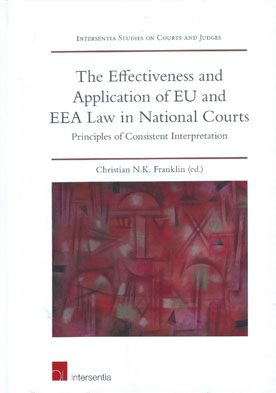
In the current decentralised system of European Union (EU) and European Economic Area (EEA) law enforcement, national courts play a crucial role in securing the effectiveness and application of the law.
A great deal of legal research has been expounded on how the Court of Justice of the European Union (CJEU) and the European Free Trade Association Court (EFTA Court) have established and developed the key mechanism for doing so – namely the principle of consistent interpretation.
Yet the principle’s scope and limits can only be fully understood if one looks to the final outcome of cases at national level, and how national courts charged with the duty of applying the principle actually do so when faced with such issues in practice.
Adopting an ambitious and consistent approach, contributors from 14 European states therefore examine the reception of the principle through national case-law, focusing on three issues: reception and understanding of the concept, its criteria for application, and its limitations.
The individual contributions are further synthesised and compared in an overarching comparative chapter that identifies considerable tension between the goals of uniform and homogenous application of the principles, and a plurality of different approaches at national level. The findings further touch on a broader range of issues, providing the reader with insights into the cooperative dialogue between European and national courts more generally.
The book will be of interest to academics, students, national and EU/EEA/EFTA institutional actors, judges, practitioners, and anyone interested in gaining unique insights into the workings of EU and EEA law and culture in practice.